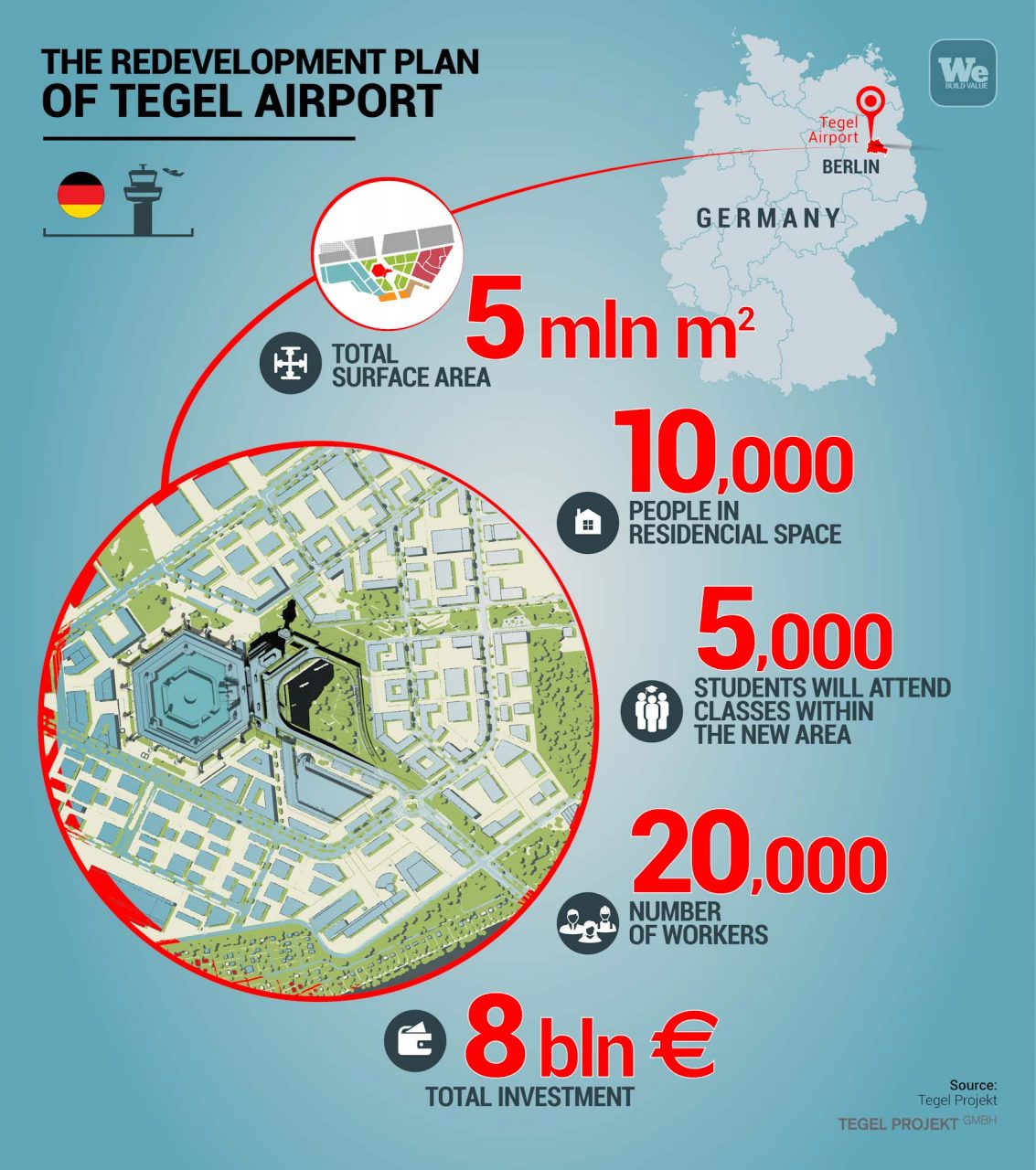At the peak of the Covid-19 pandemic, Berlin transformed its decommissioned Tegel Airport into one of the largest vaccination centers in Europe. The miracle is all in a day’s work for a city like Berlin, which is capable of changing overnight. Today, the Tegel Airport, built in 1948 during the Cold War and now in disuse, is facing an even greater challenge: it will become the center of gravity of the most ambitious urban redevelopment project since the fall of the Berlin Wall in 1989.
This could only happen in Berlin, and only in an airport site that with a surface area of 5 million square metres, or 500 square hectares (1.93 square miles), is over twice size of Monaco.
The old Tegel is therefore a city within the city. Its massive size makes it a candidate to become the new face of Berlin, a place where quality of life, sustainability and technology come together through innovative infrastructure solutions.
Tegel airport: the technology park in the city of the future
The starting point of such an iconic infrastructure project is the old hexagonal terminal, a monument to the city’s history. Around it, a new system of buildings, public spaces and mobility infrastructures will create the district of the future.
According to the first version of the designs, cars will largely be barred from the entire area. There will be residential space for 10,000 people, as well as a new technology park where companies can work side by side with the academic and training worlds. Overall, this massive project being managed by the city of Berlin calls for a mixed public/private investment of around €8 billion. In addition to traditional residences, the project includes a quota for social housing, although the lion’s share will be for businesses and universities. According to the developers’ plans, at least 5,000 students will attend classes within the new area, which also has space for as many as 20,000 workers.
According to the plans, the area will be served by a sustainable mobility transport network made up of electric buses, light rail, and bike paths. Sustainable materials will be the go-to for building construction, while a sophisticated system of water usage will collect rainwater.
The complexity and high costs of the project have naturally sparked debate among the inhabitants of Berlin even though other cities have also launched ambitious projects in recent years to redevelop their old airports (though none are this ambitious). Other examples are Kai Tak Airport in Hong Kong and the Ellinikon terminal in Athens.
The new face of Berlin
The Tegel redevelopment project is the result of the city of Berlin’s new philosophy, based on innovation and willingness to profoundly change the city skyline in the name of sustainable urban redevelopment. The goal is to become a smart metropolis, as the numbers show. In the last few years alone, 3,000 innovative start-ups founded by young people from all over the world have sprung up in the city. These companies are based in new complexes that are being built around Berlin: innovative, interconnected and sustainable buildings capable of redesigning the face of the city that still lives in the collective imagination as a place divided in two by a wall.
Mobility at the service of sustainability
Being sustainable in Berlin means moving around the city quickly, reducing traffic and polluting little. In addition to the historic yellow subway trains, known throughout the world, the city is at the center of an ambitious development plan investing €28 billion ($31 billion) by 2035. The goal is to modernise the city’s rail lines as well as surface transportation, again with a rail focus.
The plan calls to expand the surface transport network 28% by 2035, from 194 to 267 kilometres (121 to 166 miles) of city railways, focusing mainly on light rail or surface trains. At the same time, the number of streetcars in operation will also increase by 38%. Some of them will probably cut the metropolis in two, marking a new route: the one that connects the city of the Wall with the futuristic district that will rise from the ashes of the old Tegel airport.


